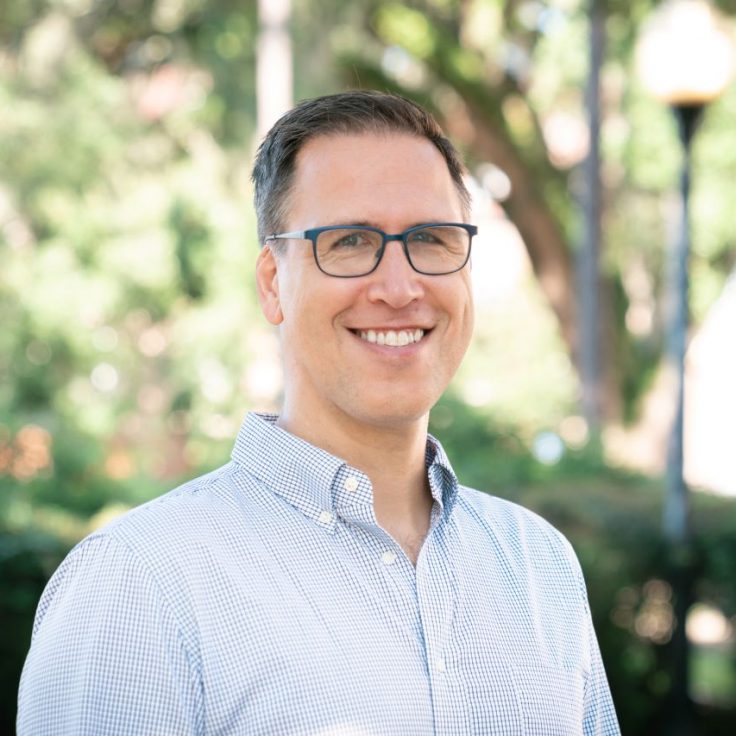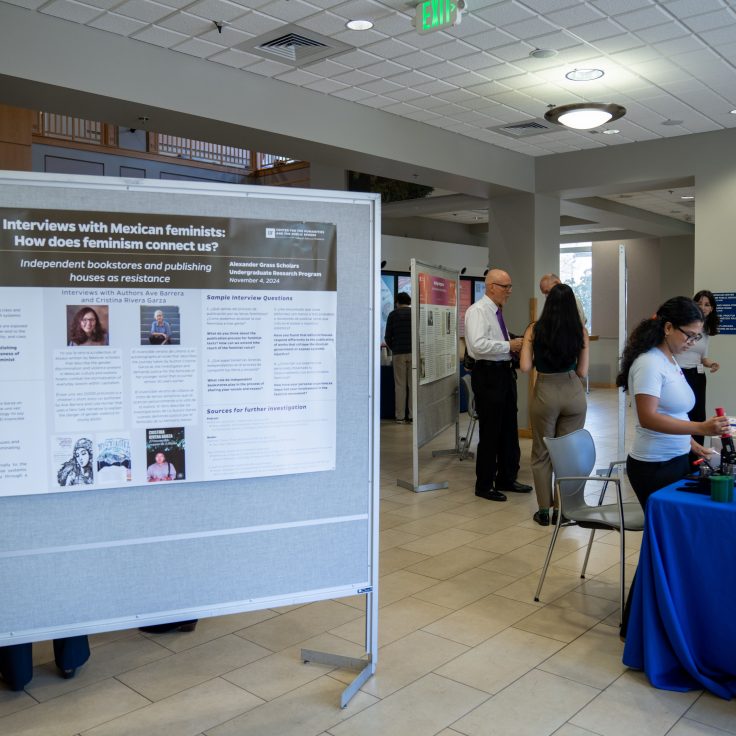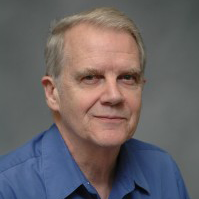Research Roundup
A snapshot of groundbreaking studies from college researchers working to grasp a firmer understanding of the world around us
UNEARTHING THE WORLD’S FIRST PUSHY PLANT

Plants have a range of remarkable survival techniques that allow them to thrive in harsh conditions. Now we can add one more to the list: Some of them have actual turf wars. If a neighbor encroaches on its space, an aster called the tall elephant’s foot can shove its intruder out of the way. It’s the plant’s way of saying, “Don’t crowd me.”
Mathematics and botany undergraduate student CAMILLE SICANGCO conducted the research, working with engineers at UF to design and 3D-print a cantilever device to place against the plant’s growing leaves. When left for 24 hours, Sicangco found a leaf had pushed the lever away. The pushing force roughly matched the force needed to lift a dime.
The revelation that native plants act aggressively against competitors “adds a new dimension to plant biology,” said FRANCIS E. “JACK” PUTZ, UF botany professor and Sicangco’s advisor. Published in Current Biology, the study is the first time interspecies shoving has been documented in botanical literature. The findings challenge the common view that plants are inert and coexist peacefully.
Story first reported by Catherine Arnold of UF News. Read the full story here.
INNOVATING A SUSTAINABLE WAY TO PURIFY MOLECULES
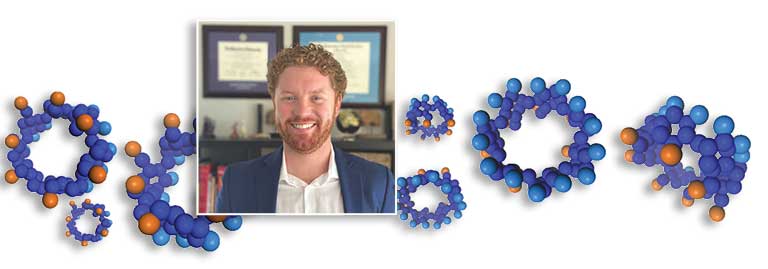
An international research team has developed a way to quickly and precisely filter chemicals by developing a nanomembrane with pores they can precisely tune. The findings, published in Nature, could make chemical separation more efficient, cost-effective and environmentally friendly for pharmaceutical and chemical industries. Molecular separations, like those used in the development of CBD oils, account for between 45 to 55 percent of these sectors’ energy consumption.
“Chemical separations are one of the most energy-intensive things humanity does,” said AUSTIN M. EVANS, assistant professor of chemistry, member of the Butler Polymer Laboratory at the University of Florida and one of the study’s authors. “By building better membranes, we can achieve higher purities, with lower costs, and lower carbon dioxide pollution.”
Read the full story here.
ASSESSING CLIMATE CHANGE RISK AND RESPONSE
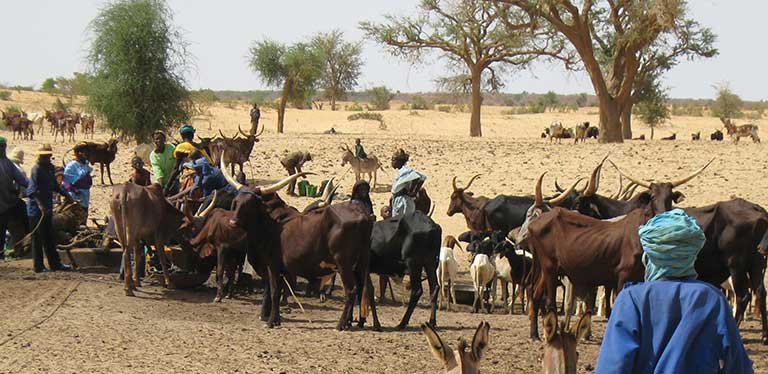
As the Sahel belt of West Africa experiences temperature rises 1.5 times faster than the global average, an interdisciplinary team of UF researchers is embarking on a study to examine the impacts of climate change in the area. They’ll explore the influences impacting the resiliency and vulnerability of the vast, semiarid region, which extends from the coastlines of Senegal eastward to Sudan. The three-year project is funded by the U.S. Secretary of Defense’s Minerva Research Initiative.
“Understanding the factors shaping how the countries of the Sahel will adapt to the effects of climate change is of critical importance for the livelihoods of the people of the region, and it also has major implications for the entire global community in our increasingly interconnected world,” said LEONARDO A. VILLALÓN, professor of African politics, who leads the study. His collaborators span UF’s Center for African Studies, Department of Agricultural and Biological Engineering, and Department of Environmental & Global Health, along with the United States Air Force Academy.
Story first reported by UF News. Read the full story here.
HARNESSING THE HEALING POWER OF MOTHER NATURE
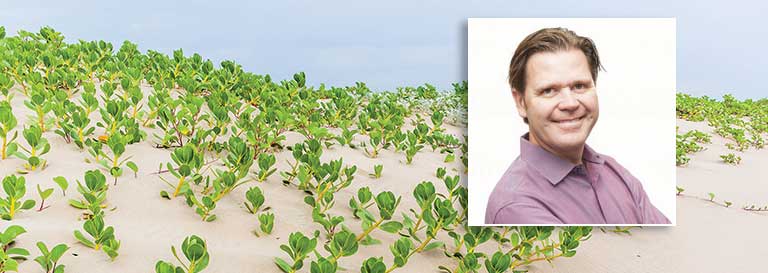
Nature-based approaches offer a lasting, cost-effective alternative for coastal restoration and protection initiatives. Associate Professor of Geology PETER ADAMS works with a multidisciplinary team at UF’s Center for Coastal Solutions to re-imagine coastal engineering techniques. They’re moving beyond traditional manmade infrastructures like seawalls to design natural buffers that offer a front line of defense against coastal erosion.
By weaving natural landscape features into traditional engineering solutions, the researchers hope to develop sustainable solutions that can help withstand the stressors posed by climate change, including sea level rise.
Awarded $3 million in funding from the U.S. Army Corps of Engineers, the team will examine how restoring vegetative coastal dunes can guard Florida’s battered First Coast against flooding and protect ecosystems, property and people. Using high-resolution GPS and drone photography, Adams documents shifts in the physical landscape to reveal the contributing processes driving changes to the beach and dune ecosystems. Adams, working alongside UF ecologist CHRISTINE ANGELINI and coastal engineer Maitane Olabarrieta, hopes their work will help fragile ecosystems weather escalating storms and unpredictable changes in the climate.
Story first reported by UF Herbert Wertheim College of Engineering. Read the full story here.
This story appears in the fall 2022 issue of Ytori magazine. Read more from the issue here.
